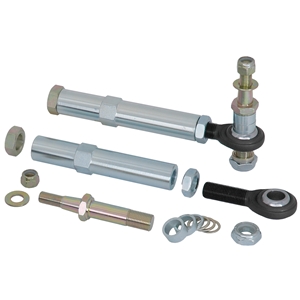Duncan Mach72
Well-known member
- Joined
- Jul 29, 2013
- Messages
- 144
- Reaction score
- 8
- Location
- United Kingdom
- My Car
- 1972 Mach1
351C 4V, 4 speed
Alum flywheel
McLeod clutch
Torque biasing diff, 3.5:1
31 spline Strange SS axles
Dual 2.5" exhaust
Maybe. But it drives really well.
When people start talking of spending thousands on their Mustangs to replace the complete suspension because they 'want it to drive like a modern car' I feel very sceptical. I believe an upper & lower arm is better than a strut, if set up correctly, as that's what race cars have. I think a few well thought out mods + learning to drive the car is all that's needed.
What I would do is not believe what people say unless they have actually measured stuff. Remove a spring and figure out for yourself how the camber changes during full suspension movement, then work out what you'd like it to do. Maybe do some drawings or mock up with some pieces of wood or even computer simulation if you can.
If you do go ahead I would recommend a kit for the hardware because of the time it will save.
At the moment I'm wondering how best to positively locate the rear axle as i know that will yield big gains in cornering control and feel.
By the way, there is another downside common to any lowering mod, it bump steers when braking. I'm definitely going to buy a kit to fix that!
When people start talking of spending thousands on their Mustangs to replace the complete suspension because they 'want it to drive like a modern car' I feel very sceptical. I believe an upper & lower arm is better than a strut, if set up correctly, as that's what race cars have. I think a few well thought out mods + learning to drive the car is all that's needed.
What I would do is not believe what people say unless they have actually measured stuff. Remove a spring and figure out for yourself how the camber changes during full suspension movement, then work out what you'd like it to do. Maybe do some drawings or mock up with some pieces of wood or even computer simulation if you can.
If you do go ahead I would recommend a kit for the hardware because of the time it will save.
At the moment I'm wondering how best to positively locate the rear axle as i know that will yield big gains in cornering control and feel.
By the way, there is another downside common to any lowering mod, it bump steers when braking. I'm definitely going to buy a kit to fix that!





